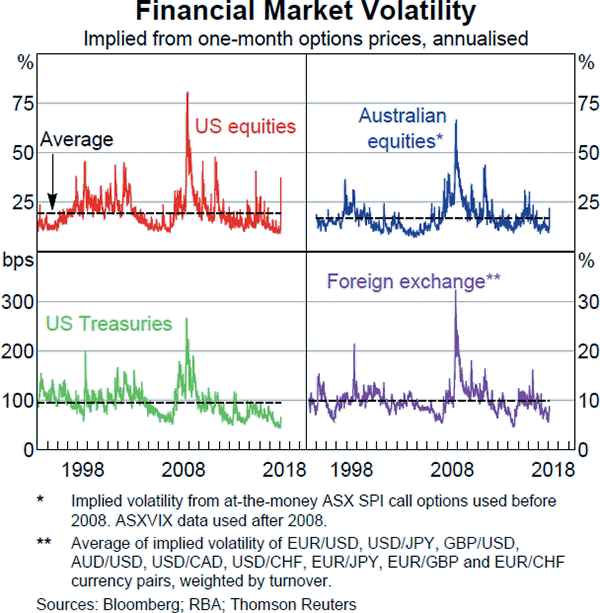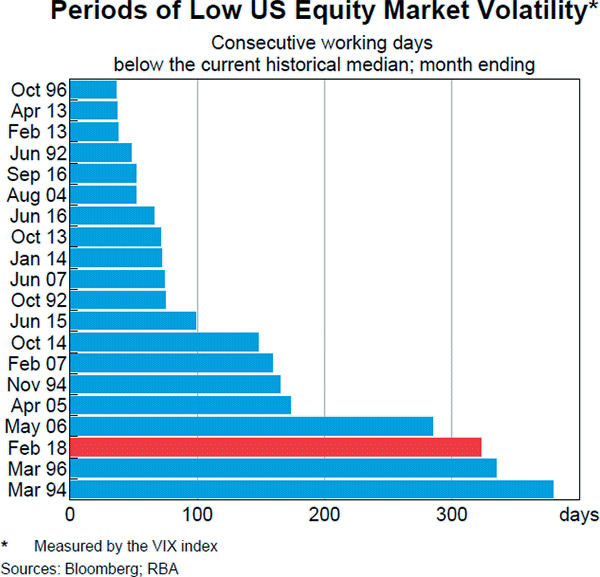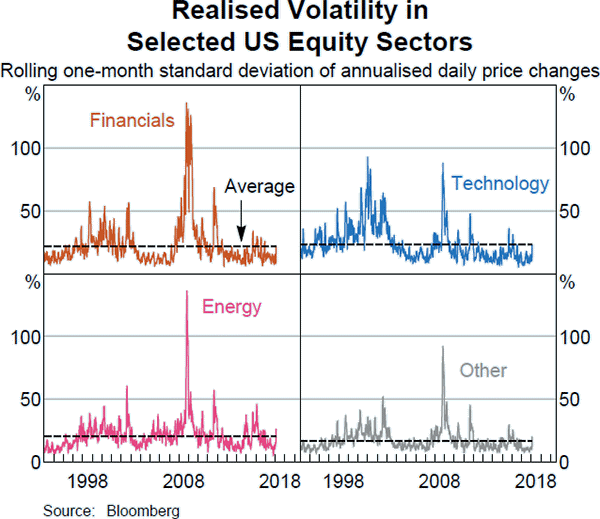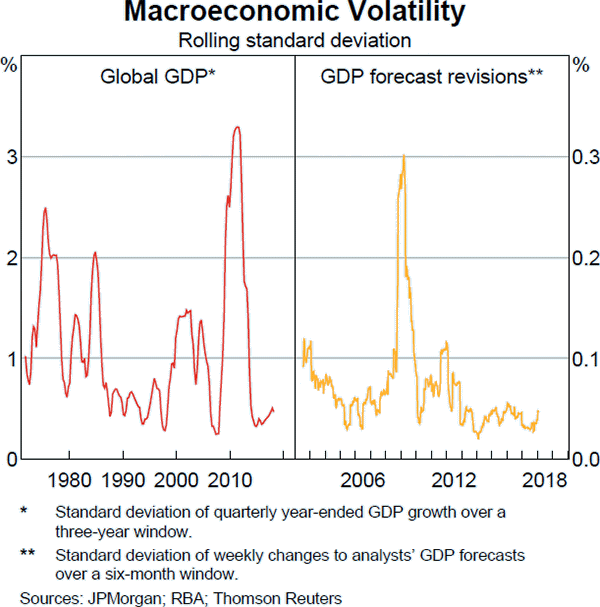Statement on Monetary Policy – February 2018 Box A: The Period of Low Volatility in Financial Markets
Volatility in global financial markets had been very low for a few years (Graph A1). This prolonged period of low volatility has come to an end in equity markets, having increased sharply in recent days. Given these developments, it is worth examining what had driven low volatility and what may have changed of late.

Extended periods of low volatility are not unprecedented, although the recent episode was among the longest for some time (Graph A2). Low levels had been observed for actual (realised) volatility and as expected volatility embedded in options prices (implied volatility). This was true for both short and long time horizons. Also, low volatility had been evident across countries, including Australia, across asset classes, and across individual sectors within markets (Graph A3).
Volatility partly reflects uncertainty about the future. The decline in volatility may have indicated that market participants had become more confident in their estimates of future outcomes. This was consistent with the observed reduction in the variability of many macroeconomic indicators, such as GDP and inflation, and a decline in the frequency and magnitude of the revisions that analysts have made to their forecasts of such variables (Graph A4). Given the importance of these variables as inputs into the pricing of financial assets, less investor uncertainty about their future values may have contributed to a reduction in implied volatility and smaller fluctuations in asset values.



Monetary policy is also an important input into the pricing of financial assets, so a reduction in the perceived uncertainty around central bank policy settings may also have contributed to low financial market volatility. Monetary policy settings have been relatively stable in recent years, and where central banks have adjusted interest rates or their purchases of assets, these changes have tended to be gradual and clearly signalled in advance. Central banks have also made greater use of forward guidance as a policy tool to attempt to provide more certainty about the path of monetary policy. The longer-term trend towards greater transparency in the decision-making of central banks is also likely to have reduced uncertainty around policy settings.
The low level of implied volatility in global financial markets may also have reflected technical factors. In particular, market reports suggest that there had been a significant increase in the selling of instruments that protect against a rise in volatility by investors in some markets to generate additional returns in the low-yield environment. This included option contracts on equities and futures contracts on indices that track volatility e.g. the ‘VIX’. At the same time, reports suggest that the demand for volatility protection had declined, reflecting a greater willingness by investors to bear financial market risks. This was consistent with other indicators of increased investor appetite for financial market risks, such as the narrowing of credit spreads and the rise in equity valuations. An increase in the supply of, and a reduction in demand for, volatility protection would have reduced its price, and thereby lowered expected volatilities implied by volatility protection instruments.
In recent days, actual and implied volatility in equity markets has risen sharply, particularly in the United States. At least in part, this appeared to have reflected a reappraisal of the prospects for a rise in inflation and consequently the outlook for central bank policies. The increase in implied volatility was particularly pronounced in comparison to the size of movement in other market prices, which is consistent with reports that the increase also reflected technical factors. In particular, there has been a rapid reduction in the supply of, and an increase in demand for, volatility protection. The nature of certain participants' exposure required them to purchase additional volatility protection in response to the initial rise in volatility and fall in equity prices in order to maintain a hedged position. As others sought to take advantage of this dynamic, there was a rapid increase in demand for volatility protection. Nevertheless, the rise in the price of volatility protection does not appear to have led to a disruption in the broader functioning of financial markets to date.